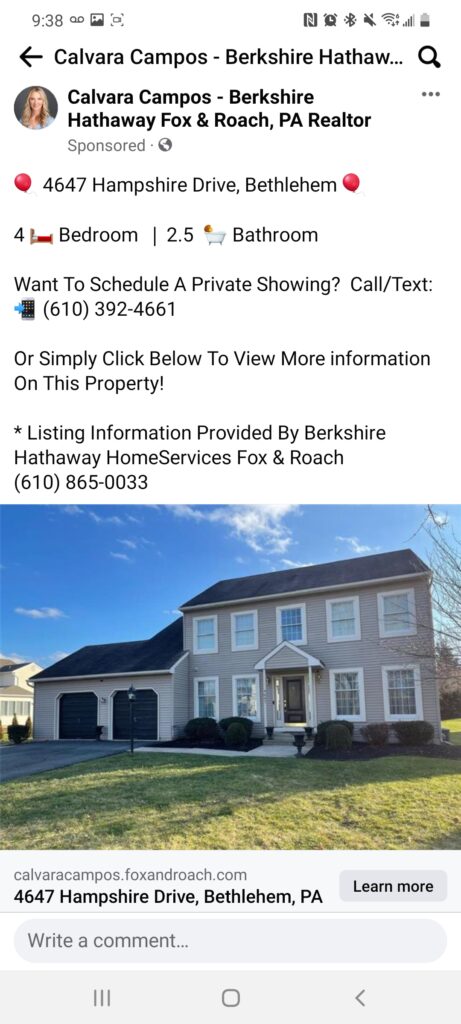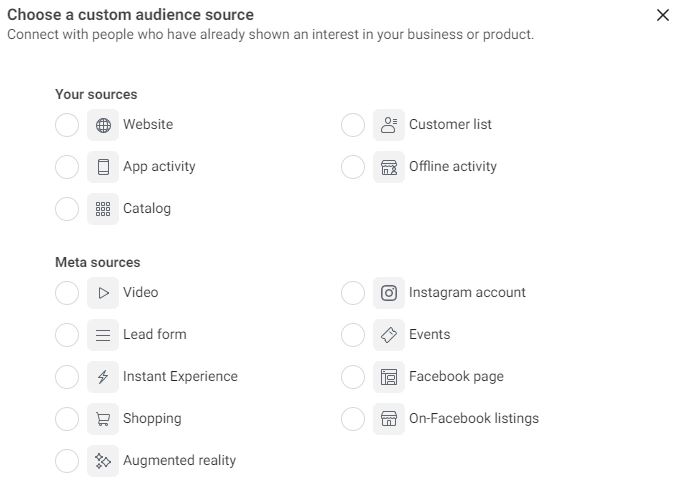Setting Up Dynamic Ads Using KV Core
Creating an effective digital marketing strategy for real estate can significantly enhance your lead generation and retargeting efforts. Dynamic ads, utilizing your brokerage’s listing inventory via KV Core’s XML Feed, can play a pivotal role in achieving this. This comprehensive guide aims to walk you through the process of setting up Dynamic ads for lead generation or retargeting, leveraging your available listing inventory in a seamless manner.

Step 1: Locating Your KV Core XML Feed
First and foremost, it’s crucial to identify and access your KV Core XML feed. This feed contains all the necessary listing information required to populate your dynamic ads. We’ll guide you on navigating through KV Core’s platform to find this feed, ensuring you have the correct URL to proceed.
Sample: https://api.kvcore.com/export/listings/<ZAPIER KEY>/7
Click Here To Locate Your Zapier Key
Step 2: Adding Your Feed to Meta’s Network
Once you have your XML feed URL, the next step involves integrating this feed with Meta’s advertising network. This step is crucial for automating your listing advertisements on platforms such as Facebook and Instagram. We will provide detailed instructions on how to add your XML feed as a data source within Meta’s Business Manager, preparing your listings for dynamic ad creation.
Click Here To Create Your Listing Feed Catalog
Step 3: Defining Your Audience – Retargeting vs. New Lead Generation
A key component of successful advertising is targeting the right audience. Whether your goal is lead generation or retargeting, defining your audience precisely can significantly impact your campaign’s effectiveness. This section will cover how to use Meta’s tools to specify demographics, interests, and behaviors that align with your ideal clients, ensuring your ads reach the individuals most likely to engage with your listings.
When setting up dynamic ads for your real estate listings, defining your audience is a critical step that shapes the direction and effectiveness of your campaign. This involves choosing between two primary strategies: retargeting existing leads or generating new leads. Each approach uses different targeting methods and serves different purposes in your marketing funnel.
Retargeting with Custom Audiences
Retargeting is a strategy aimed at re-engaging individuals who have already interacted with your brand. This can include:
- Website Traffic: Target individuals who have visited your website but did not take a specific action, such as filling out a contact form. By using Meta’s Pixel installed on your site, you can create a custom audience based on this traffic, ensuring your ads are shown to people who have shown interest in your listings.
- Social Engagement: This involves targeting users who have engaged with your content on social media platforms, such as liking posts, sharing listings, or commenting on your page. These engagements indicate interest, making them prime candidates for retargeting.
- Database Lists: Utilizing your existing database of leads, you can upload lists of contacts (e.g., email addresses) to Meta and create a custom audience. This is particularly effective for staying top of mind with leads who have previously expressed interest in your services.
Retargeting focuses on deepening relationships with individuals who are already aware of your brand, nudging them further down the sales funnel towards making a decision.
New Lead Generation with Dynamic Feed Ads
Conversely, new lead generation targets individuals who have not yet interacted with your brand. This approach typically involves:
- Broad Targeting: Leveraging Meta’s network to target a broader audience based on demographics, interests, and behaviors that align with your ideal client profile. Unlike retargeting, broad targeting aims to capture the attention of potential clients who are not yet aware of your listings or services.
- Dynamic Feed Ads: By integrating KV Core’s XML feed with Meta, you can automate the creation of dynamic ads that showcase your latest listings. This not only saves time but also ensures your ads are always up-to-date with your current inventory.
- Objective Focused: The goal here is to generate interest and capture new leads by reaching out to people who may be in the market for a new home but are not yet familiar with your brokerage. It’s about expanding your reach and introducing your brand to a wider audience.
Key Differences
The primary difference between retargeting and new lead generation lies in the audience and the intent behind each strategy:
- Retargeting aims to re-engage individuals who have shown interest in your brand, using tailored ads based on their previous interactions. It’s a more focused approach that seeks to convert interest into action.
- New Lead Generation seeks to cast a wider net, targeting individuals based on general criteria rather than previous interactions. The goal is to introduce your brand and listings to new potential clients, expanding your audience and filling the top of your sales funnel.
By understanding these differences and strategically defining your audience, you can effectively leverage dynamic ads for both retargeting and new lead generation, maximizing your real estate marketing efforts.
Click Here To Set Up your Audiences

Step 4: Setting Up the Ad
With your XML feed integrated and your audience defined, it’s time to create your dynamic ad. We’ll walk you through the process of setting up both carousel and single image ad formats, allowing your listings to be showcased in the most appealing way. This includes selecting the right images, crafting compelling ad copy, and choosing the appropriate call-to-action (CTA) to encourage engagement.

Conclusion: Launch and Optimize
Finally, after setting up your dynamic ads, we’ll touch on the importance of monitoring and optimizing your campaigns. Through Meta’s analytics tools, you can track your ad performance, make necessary adjustments, and ensure that your “set it and forget it” advertising strategy effectively generates new leads and keeps you top of mind with your existing database.
This guide aims to simplify the process of leveraging KV Core’s XML Feed for dynamic real estate advertising on Meta’s network. By following these steps, you can efficiently create dynamic ads that not only attract but also engage your target audience, ultimately driving more leads and maintaining a strong presence in your market.
Recent Comments